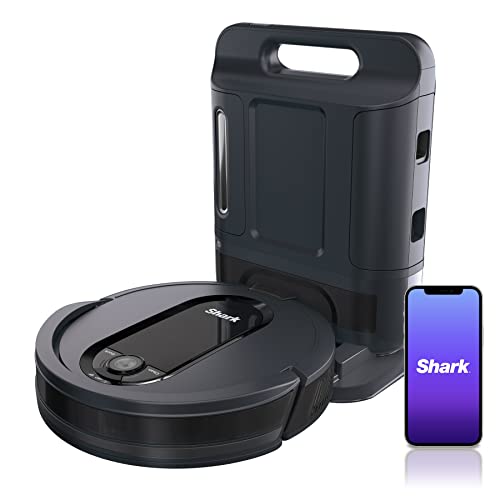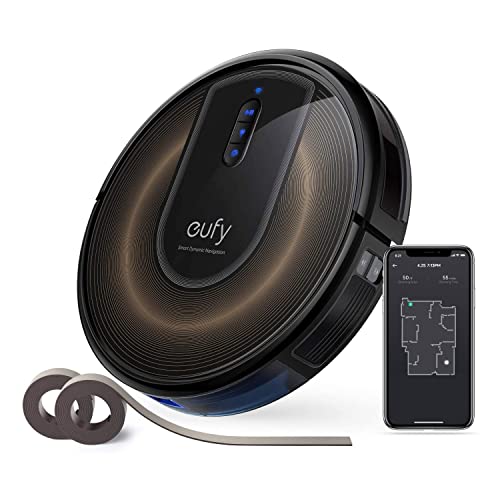Company Overview
-
Posted Jobs 0
-
Viewed 67
-
Categories Social care/voluntary work
Company Description
15 Best Pinterest Boards Of All Time About Robot Vacuum And Mop
How to Maintain a Robot Vacuum and Mop
A robot vacuum and mop can aid in keeping your floors clean on a regular basis. Set it to run on a set schedule and you’ll return home to sparkling floors without any effort from you.
Apps can be used to control and schedule the majority of robot vacuums that can mop. Certain robot vacuums feature an automatic emptying bin, and a lot have a microfibre pad that can be washed at will.
1. Simple to use
Robot vacuums and mops have been designed to be user-friendly and easy to maintain. However it’s important to recognize that they can’t do all the cleaning for you. You will need to do the cleaning yourself from time to time. In addition, you may require replacing parts such as filters or wheels. Follow the recommended maintenance schedule set by the manufacturer to ensure optimal results.
This could take a few weeks. This could take several weeks. During this process, it may be pushed into objects or even hit walls. You can prevent this from happening by creating “no-go zones” using the app. You can adjust settings like mopping and suction power by using the app after your robot has been located.
The app will also tell you when your equipment needs to be cleaned or replaced. This will allow you to keep your robot running smoothly for many years to come. Certain parts wear more quickly than others based on how often they’re used. For instance, the brushes on a robot vacuum need replacing every six months. To increase the airflow, the dust filter of a robotic vacuum needs to be cleaned at least once a week. This can be accomplished by removing the filter and rubbing it against a hard surface to release any debris that is loose. Rinse the filter with cold water until it’s clean. Let it dry before inserting it back into.
Before you disassemble your robot it is a good idea to consult the user’s manual for specific instructions on how to clean and troubleshoot. You’ll need basic tools, like a trash can, a microfiber cloth, brushes with soft bristles (an old toothbrush is a good choice) and scissors. To get the most effective results, it’s a fantastic idea to set aside one weekend each month to these tasks. After handling any soiled parts clean your hands with soap and warm water to cleanse. This will help you avoid the risk of injury and contamination to your robot or yourself.
2. Floors suitable for all types of flooring
The most efficient best cheap robot vacuum And mop mops are versatile enough to work on tile and hard floors. Some mops from robots include disposable or disposable pads that can be used either wet or dried. The pads are usually machine washable to keep them fresh and clean. Some robot mops come with water reservoirs you can fill up with your preferred cleaning product, while others use cleaners from the brand. They have different settings for sweeping and mopping.
The majority of robot mops are able to clean under furniture, along edges and in areas that are cluttered. They can also become stuck on small items. It is essential to clear the area prior to starting. Also, the mops will likely have to stop charging or empty their water tanks and you will need to be at home during that time.
The majority of robot vacuums and mop makers have a cleaning plan to help you organize the space. You can mark off rooms and areas that you want to avoid cleaning to inform the robot to stay away from these areas. The apps for the majority of robot mops let you block carpeted areas.
If you have a mix of hard and carpet floors search for a machine that can vacuum and mop at the same time. When we conducted our Yeedi robot mop and vacuum test we were impressed by its ease of navigation through the pre-mapped space, adjusting to obstacles without missing any places. It also had a wide range of mopping modes and performed well on hardwoods, ceramic tiles and carpeted stairs. The robot was simple to sync and set up and didn’t leave a streak of wet flooring behind. It had a tough time with the rug and ended up under it. But it was able of releasing itself without our help.
The iRobot Combo j7+ is our top-rated robotic mop and another great choice for busy homes with many surfaces. It’s the very first 2-in-1 to come with fully retracting mop pads that allows the robot to be lifted off carpets and rugs to prevent wet carpet messes. It also features clever iRobot OS 5.0 updates that increase intelligence and personalization.
3. Easy to empty
If you own a robot mop or vacuum cleaner you’ll need it to be easy to empty and maintain. You’ll need to manage other chores to keep the robot running. This is why a lot of robots have a self-emptying dustbin that allows you to easily dispose of the contents. This may seem like an insignificant convenience, but could make a significant difference to your experience.
Another major aspect of a robot vacuum is the filter that traps dirt and dust. This will ensure that your floors are as clean as possible and prevent dust from recirculating into the air. Choose a HEPA filter model, which can capture the smallest particles and leave your home spotless.
In addition to the HEPA filter, certain models also come with an reusable water tank and mop pads This means that you don’t need to buy disposable cleaning products. This will decrease household waste and save money in the end.
When choosing a robot cleaner for your home, you should think about the size of the house as well as the space available for the unit’s base and dust bin. The more space you have, the less you’ll need to move your device around.
It’s recommended to read the reviews for the model you are considering prior to purchasing it. This will provide you with an idea of the reliability of the model and what kind of issues it faces. It’s also an excellent idea to determine whether it comes with remote control or app, which can be helpful for planning and monitoring its progress.
In the end, the benefits of a robot cleaner are worth it, especially when you consider how hands-off they can be. If you’re a parent who is busy with kids, work and other chores and other obligations, the ability to let your robot cleaner do the hard work can be a real lifesaver. Make sure to examine the battery and see if there is a low-charge indicator before you purchase.
4. Easy to maintain
Depending on the model, regular maintenance could include cleaning easily accessible components such as the filter and dust bin, or a slightly more intensive process like taking off and washing the main brush roll. It is also crucial to clean the robot’s sensors, especially the ones that help it navigate and avoid obstacles within your home. It is recommended to take them off them and clean them with microfiber cloths or a mild cleaning agent every now and again.
The main sensor of a robot vacuum is the one that carries dirt into the dust bin. However, it could be entangled by hair and other debris. Most models allow you to take this sensor off for easy cleaning. Spending a few minutes scrubbing with a microfiber towel can be the difference between your device working as intended or not at all.
For a robot mop, it is equally important to clean and dry mopping pads or cloths regularly. This will stop the growth of bacteria growing on damp cloths and pads. This could make your floors smell and make them less effective. Many manufacturers recommend rinsing mopping cloths or pads in some water, then letting them air dry before reuse.
The wheels of the robot and its front bumpers should also be cleaned regularly. Over time, they’ll accumulate dirt and hair and make it difficult for the robot to move. These parts can be cleaned gently with a microfiber cloth, but not too wet. You can also use a brush or soft-bristled one to reach areas that are difficult to reach.
 Another piece of equipment that is easy to clean is the camera on the robot that is found on the majority of models and is responsible for taking photographs of your living space. The majority of the time, it is used to map, allowing the robot to design no-mop zones and schedules. The camera can be wiped using a dry, clean microfiber cloth or with an melamine foam sponge. Be sure to check your manual for specific instructions on this.
Another piece of equipment that is easy to clean is the camera on the robot that is found on the majority of models and is responsible for taking photographs of your living space. The majority of the time, it is used to map, allowing the robot to design no-mop zones and schedules. The camera can be wiped using a dry, clean microfiber cloth or with an melamine foam sponge. Be sure to check your manual for specific instructions on this.

